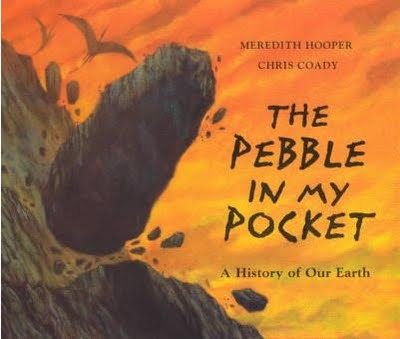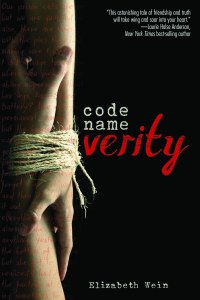It’s Monday! What are you reading?
Join Jen from Teach Mentor Texts and Kellee and Ricki from Unleashing Readers and share all of the reading you have done over the week from picture books to young adult novels. Follow the links to read about all of the amazing books the #IMWAYR community has read. One of the very best ways to discover what to read next!
This week in my blogging world, I . . .
- shared my ten favourite nonfiction picture book biographies featuring inspiring women for the #nf10for10 event. My post was called The Wonder of Women. Check out all of the lists featured here.
- celebrated my rich reading life for The Celebration Link Up hosted by Ruth Ayres
It is report card writing season so . . . I always feel like I don’t get the reading in that I want to 😦 But this week, I managed to read some wonderful picture books. Here are my favourites:
My Name is Blessing written by Eric Walters and illustrated by Eugenie Fernandes
This was quite the story – based on the author’s actual visit to Kenya in 2007 where he met the little boy this book is based upon. This little boy is raised by a Grandmother raising many of her grandchildren who are now orphans. They have little food and lack adequate shelter and sleeping space. Muthini (Grandmother) must make the best decision for her grandchild. This is the story of what this means for a special little boy eventually called Blessing.
What’s Your Favourite Animal? by Eric Carle and Friends
I was on the lookout for this title and when my Teacher Librarian and I went book shopping on Friday, it didn’t take much (she was as enchanted as I was!) to convince her we needed this title for our collection. In fact, I think every library must have this title! It celebrates art and illustration, story telling and the unique tastes and favourites of beloved picture book illustrators. Automatically, one is tempted to answer two questions. What’s my favourite animal? and Which favourite do I like best from this book? I am sure that my answers will change often but in this moment I am going with: The owl as my favourite (wise, secretive and majestic) and my favourite here? I’m with Jon Klassen, ducks.
The Snow Leopard by Jackie Morris
How to describe this title? It is lyrical and full of myth, magic and enchantment. A story of a Guardian spirit who must pass into another world (the star filled sky) and so teaches a new Guardian to lead and watch – this one a child who takes the form of the beautiful and elusive snow leopard.
Bird Child written by Nan Forler and illustrated by Francois Thisdale
This isn’t a new read for me but I it feels fresh anytime I read it with a new group of children and it has been much on mind this week after sharing it with this current group. So I am sharing it here. This is one of the best books to illustrate the power of the bystander to stand up and not stand by. My students were so sympathetic to the character of Lainey who had been bullied.
“Maybe those bullies buried her smile when they buried her hat in the snow.”
“Those bullies undug the sadness in her.”
When Eliza stands up to the children who are bullying Lainey and others follow her lead, it is so powerful.
“One girl did it!”
“She is a leader and others are doing the right thing now too!”
The Quayside Cat written by Toby Forward and illustrated by Ruth Brown
This was our BLG book this week. I shared student reviews on my class blog. We loved getting lost in the illustrations that made us feel as if we were rolling about on the high seas. One cat with “sea legs” so to speak, leads another cat on an ocean adventure.
Coral Reefs by Jason Chin
Nobody depicts getting lost in a book quite like Jason Chin. But lost in a book means lost in a completely different world – in this case the magical world of coral reefs. Simply gorgeous. Worth reading and rereading to examine all of the clever details from beginning to end when our little reef explorer passes this book onto new readers and stands to watch – drip, drip, drip . . . My son was fascinated with locating the underwater creatures he had seen while snorkeling this past summer.
Henri’s Scissors by Jeanette Winter
Both Margie Myers-Culver and Linda Baie have raved about this book and for very good reason! Another title I would love to own and keep in my picture book biography collection. This book focuses on the time in Matisse’s life when he was too ill to paint and draw and discovered a new way of making art through paper cut outs. Beautifully told.
I also finished one novel – Listening for Lucca by Suzanne LaFleur
This was a #Mustreadin2014 title for me. My daughter is a huge fan of LaFleur and I was lucky enough to win a copy of this title in a Goodreads giveaway – Suzanne signed the book to my daughter and I gave it to her at Christmas. She carried it with her on every holiday visit to show people and then finally sat down to read it. I “borrowed” it from its special place on her bookshelf. This is an ideal MG title – perfect for readers 10 and up who are beginning to be more independent in the social world but still remain very connected to family and home. There is plenty of introspection and soul searching in this book as we get to know Siena. But there is a whole lot more: ghosts, spirits, visions and mystery. Yet everything is very grounded in the story of a young girl growing up and searching for answers for herself and her family – from the typical questions of this age (Do people think I am strange?) to more complicated questions like why does three year old Lucca refuse to speak? I read this mostly in one early morning read and it was wonderful to be carried away to Maine beaches, old houses and the warmth of family connection.
Up next? I’m going to continue on with the theme of ghosts and channeling spirits and have begun Small Medium at Large by Joanne Levy. My children and I are reading two nonfiction picture books and started The Shadow Throne by Jennifer Nielsen earlier in the week. How impatiently we had been waiting for this title!
Reading Goal updates:
2014 Chapter Book Challenge: 12/100 novels complete
Goodeads Challenge: 108/650 books read
#MustReadin2014: 7/30 complete
Nonfiction Picture Book Challenge: 36/65 complete
What are you reading? Wishing everyone some time to get lost in a book!





































































